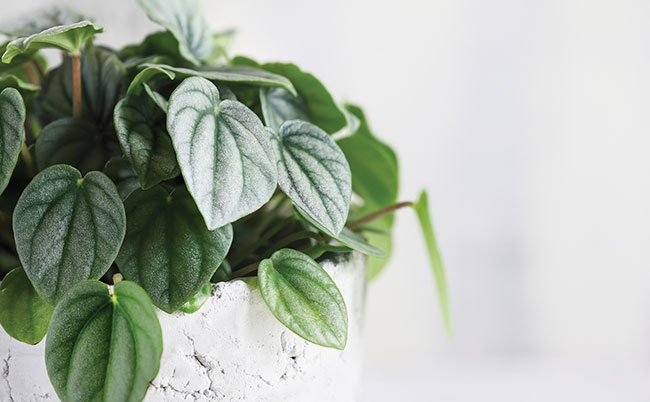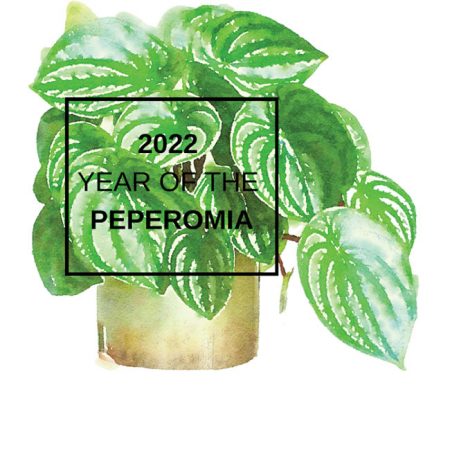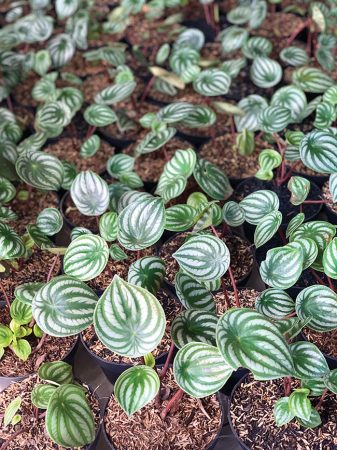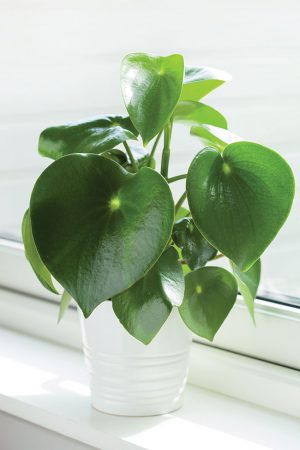
Features
Crop Culture
Flowers
Retail
Houseplant in the spotlight: Peperomia
The popular ‘Year of’ garden marketing program debuts a new category this year to reflect consumer wants.
August 24, 2021 By Diane Blazek
 The peperomia was selected for 2022’s ‘Year of’ program in the new houseplant category for its diverse colour and pattern choices, ease of growth and popularity among consumers.
PHOTO: © StephanieFrey / iStock / Getty Images Plus
The peperomia was selected for 2022’s ‘Year of’ program in the new houseplant category for its diverse colour and pattern choices, ease of growth and popularity among consumers.
PHOTO: © StephanieFrey / iStock / Getty Images Plus Houseplant sales were booming before the COVID pandemic, and they are in even greater demand now. More home offices mean a surging demand for houseplants. Multiple news outlets report that North American houseplant sales are up by a range of almost 50 per cent to more than double what they were pre-pandemic.
With National Garden Bureau’s (NGB)expanding member base and more members offering houseplants, the organization added this new category to the long-established ‘Year of’ program for 2022.
Since 1980, NGB’s ‘Year of’ program has chosen and promoted a specific crop class within each category that is popular, easy-to-grow and has a diverse number of varieties. The early years featured an edible and an annual, most often seed-propagated. In the new millennium, the organization expanded the program to include more non-seed varieties and also added perennials, bulbs, and flowering shrubs.
For the newly established houseplant category, 2022 was named ‘Year of the Peperomia.’

Why Peperomia?
Peperomia are native to hot humid areas like the South American rain forests and similar regions in Florida and the Caribbean. Because of this, they make wonderful houseplants with many desirable features. They can tolerate almost any light levels and survive with just medium watering, making them an easy addition to a houseplant assortment.
There are many varieties of peperomia with varying shapes and foliage colours. These days, smaller houseplants (a.k.a. babies or minis) are fashionable. And with peperomia’s limited size of 12-18” tall (30 to 46 cm), it is an extremely popular houseplant pick.
Here are a few varieties of note:
- Beetle Peperomia (P. quadrangularis)
- Belly Button Peperomia (P. verticillate)
- Bibi Peperomia (P. trinervula)
- Colombian Peperomia (P. metallica var. colombiana)
- Cupid Peperomia (P. scandens)
- Golden Gate Peperomia (P. obtusifolia)
- Jelly Peperomia (P. clusiifolia)
- Rainbow Peperomia (P. clusiifolia)
- Raindrop Peperomia (P. polybotrya)
- Teardrop Peperomia (P. orba)
- Watermelon Peperomia (P. argyreia)

Peperomia come in various textures, including this P. argyreia.
PHOTO: © ddop / iStock / Getty Images Plus
Culture tips
According to the following excerpt from the University of Florida’s Mid-Florida Research and Education Center (MREC) in Apopka, Fla., peperomia are easy to grow from cuttings and generally easy to root.
“Terminal stem cuttings can be used with all types and permit production of finished plants in the shortest possible time. Cuttings with one leaf and a short section of stem can be used if stock is limited or small finished plants are needed. Stem cuttings which have one or more buds are necessary for propagation of variegated cultivars.”
For three-inch pots, the MREC says it’s common to use two terminal stem cuttings, each with two to four expanded leaves. “Rooting and finishing three-inch pots require three to five weeks depending upon size of cuttings and season.” For four-inch pots, it’s common to go with three to four cuttings each.
Moisture is an important factor. The MREC suggests that peperomia should be produced in greenhouses in order to keep tighter reins on soil moisture. Potting media should be “very well drained and as pathogen-free as possible.” They recommend using peat-lite mixes with coarse particles, such as perlite, styrofoam or bark char for aeration.
Mid-day light intensity should fall between 1,500 and 3,500 foot candles. Nitrogen is approximately 2.3 pounds of per 1,000 square feet per month, based on a 3-1-2 ratio fertilizer. “Since some of the peperomias are very short-term crops, a liquid fertilization program is preferred because excessive soluble salts severely damage plants in retail stores or homes of consumers. Liquid fertilizer should be administered at least once a week to ensure a slow rise in fertility during the short production period.”

P. polybotrya are examples of how diverse this houseplant group can be.
‘Year of’ program
As an indicator of popularity, the ‘Year of’ content on the NGB website is consistently among the top 10 visited pages on the site each month.
NGB does extensive work in creating marketing content, which helps save you time and money, especially during the busy spring season!
This fall, photos provided by NGB members of numerous peperomia varieties will be posted on the NGB website. After November 1, 2021, fact sheets, flyers, handouts, signage, posters, and social media graphics can be downloaded for use at no charge.
Growers and garden centres can take advantage of the publicity from this program and use the marketing collateral in their 2022 catalogs, websites, advertisements, presentations, trade show booths, event exhibits and other purposes. Consumer publicity for the 2022 ‘Year of’ crops will begin in January 2022.
Stay tuned for profiles of each 2022 ‘Year of’ crop in future editions of Greenhouse Canada.
Diane Blazek is executive director of All-America Selections and National Garden Bureau. NGB is a North American non-profit organization and marketing arm of the gardening industry. It exists to educate, inspire, and motivate the use of plants in homes, gardens, and workplaces. NGB members come from around the world and are experts in the field of horticulture. Find out more at ngb.org.
Print this page